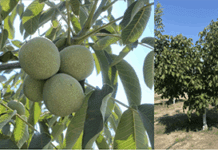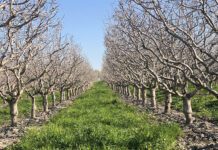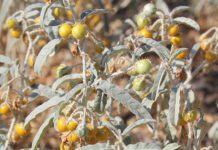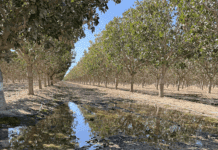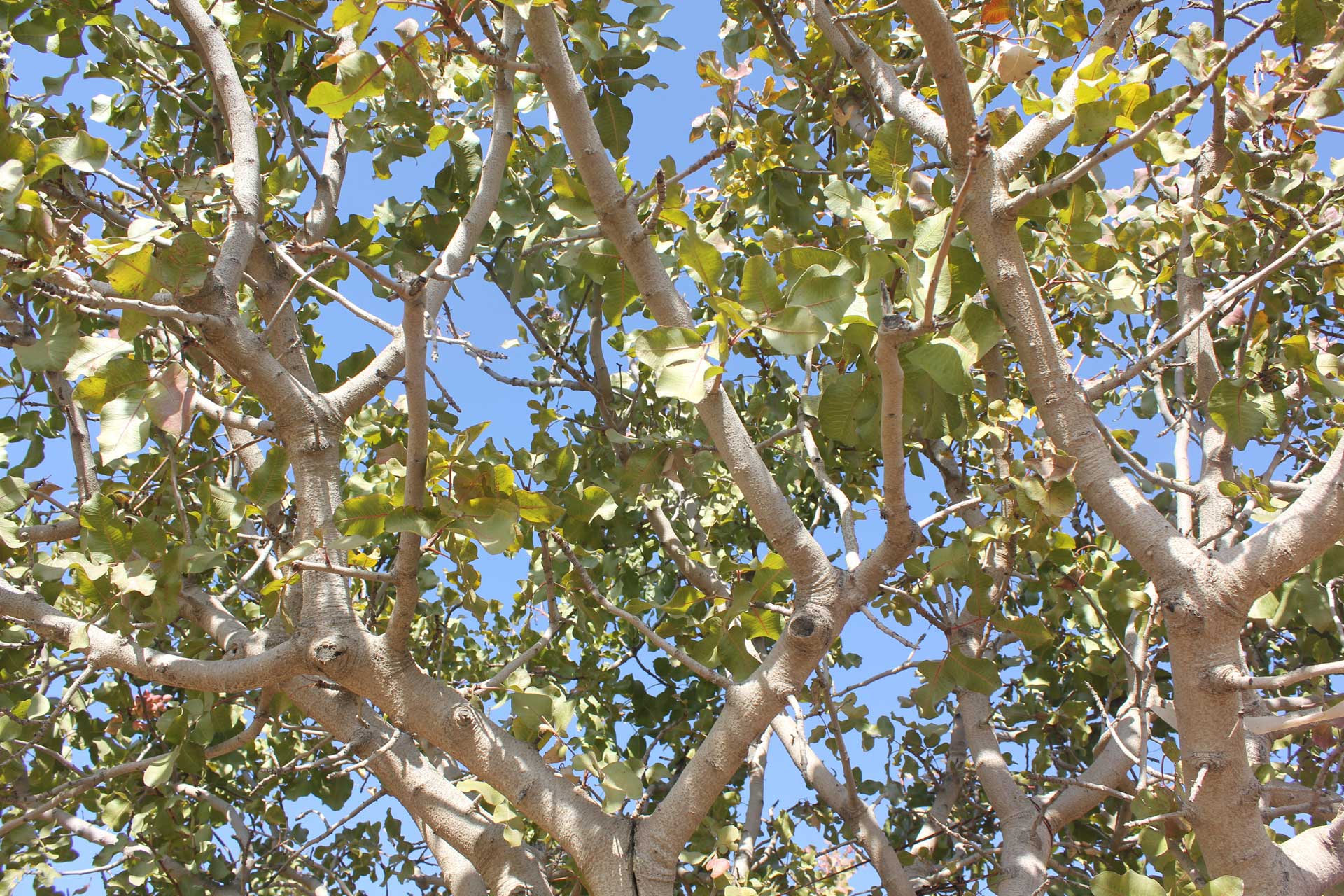
It’s April, and that means pistachios are on the move! Although we see the vegetation pushing and the clusters developing, we sometimes forget what is happening on a microscopic level. We are concerned with cell division. With too many criminals in our state here in the west, the government just lets them out of their cells instead of creating more. As farmers, we don’t have that option. Any nutrition that escapes costs us a ton in the long run, and we can’t chase them down later. So, what do we do?
We add nutrition. But what kind? Soluble. Stop playing games with rocks and heavy salts. We need calcium on an ionic level that our roots can drink. If you are still playing with only rocks, you better add some biology and acid to break those nutrients down in your soil. If you have the option to fertigate often with smaller shots of low salinity cations, I have good news. You’ve got this!
At last month’s Pistachio Industry Annual Conference in Carlsbad, Calif., we had the honor of having many guest speakers share their knowledge of agronomy and give us some new insight into how to get more nutrition into our trees, often with less inputs. Someone I highly respect in the agricultural industry, John Kempf, dove deep into some specific nutrients to help us achieve those results. He’s as passionate as they come in helping growers. ‘Wait, you said get more into your trees while applying less?’ ‘Aw yes, Grasshopper, more with less.’ That brings up some questions: 1) is it possible 2) is it sustainable, and 3) is it affordable? In my humble opinion, I believe the answer is yes, yes and yes.
Calculate Applied Nutrient Levels
I have spoken to many farmers over the last few years that haven’t met their calculated applied nutrient levels for specific nutrients. When you calculate the soil expectation and crop removal rates, many times they are grossly short on NPK and magnesium for the year. And yet, year after year, their tissues have improved and their soil acetate extraction results have remained constant.
What does that tell us? The soil calculation of parts per million (ppm) with an acetate extraction is an expectation of the seasonal availability of those nutrients in the next year, not a total nutrient load (thank you Joe Mullinax for making that clear!) Let’s repeat that: That is not a number that represents the total nutrient load of that element, just a calculation of what should be released this year. So, when you see a soil test with 1000 to 5000 ppm calcium for a season, and you do the math (“times two, carry the one, multiply by the square root of pi, e=mc2 and calculus…”), 20,000 pounds of calcium in one foot of soil should be plenty for the next 100 years of farming!
So, what are we missing here? Once again, it’s not what you put on your crops, but what you get in your crops that matters! It has to get into the irrigation water. Let’s say you were using a 100% soluble calcium solution. Twenty gallons per season of a 6% solution is going to correlate with several tons of wallboard when you factor in solubility. Calcium will enter a plant much more effectively as an ion or with nitrate than it will with sulfate, and way cheaper than the cost of tons of dry material and the labor to spread the traditional route. Use the dry to amend your soil if it is severely depleted, use the soluble forms to feed your trees. I’ve seen it work time and time again. Is it sustainable? Go back to the comment on 20,000 pounds! We’re good. Is it affordable? The most expensive nutrients are the ones that don’t get in your trees or improve your soil health. Factor in application costs and your budget hasn’t changed.
Avoid Square Pegs in Round Holes
Now let’s go one step further. Let’s talk potassium and magnesium. The cations all compete for similar spots in a plant. Sodium and potassium are notorious for it. Calcium, potassium and magnesium fight pretty hard with sodium for sites in the cellular cage match of life. If the nutrient demand curves I have mentioned in several articles don’t match what you are putting on, you are trying to put a square peg in a round hole. You ever try to spoon-feed a toddler the last scoops of baby broccoli when they don’t want it anymore? You just make a mess. Your trees and soils will do the same thing. I love a little potassium to push bloom and get some zinc and boron moving into a tree. But after pollination, you have about 21 days to maximize calcium and create that infamous cell division (sorry almond guys, it’s already happened.) Do this quick math. Let’s say you create 100 cells at cell division in one plant (A) and 200 cells in another (B). If you are the best farmer in the world and you fill those 100 cells to the max, let’s say that’s a measure of two, that’d be 200 “growth units” in A. If you miss some things later in the season in option B and aren’t perfect, you have 200 cells to work with. If those 200 cells only grow to say a measure of 1.5, that’s 300 growth units because you have some many more cells. That’s a significant improvement. I’d say that should correlate to more weight. After pollination and full leaf expansion, we can address potassium and add some magnesium for chlorophyll production. But we need to measure it.
How do you know? You need to pull multiple tissue samples. Pull them from old leaves and new ones as well on the same tree. Keep them separate. If you haven’t gotten into it yet, you can also send them out for sap analysis. If a consultant like me is pulling your tissues, make sure they are also pulling them from the same height, the same place on each tree and at the same time of day, each time, and in the sun. You want photosynthesis to be optimal with each sample for a better comparison. Don’t just guess. I have often looked at tests and told a grower to back off on specific nutrients if they were out of balance with the rest of the nutrients. We saved some serious money. Too much of one thing isn’t a good thing, nitrogen being one of the worst culprits. Prove to yourself you may not need as much supplemental nutrition if you apply it correctly, when its needed, in a form it can be absorbed and balanced. Things become much more efficient in the proper mix. Divide those cells and then show how cool you are at filling them. You may find you even save some money while you’re making more.






